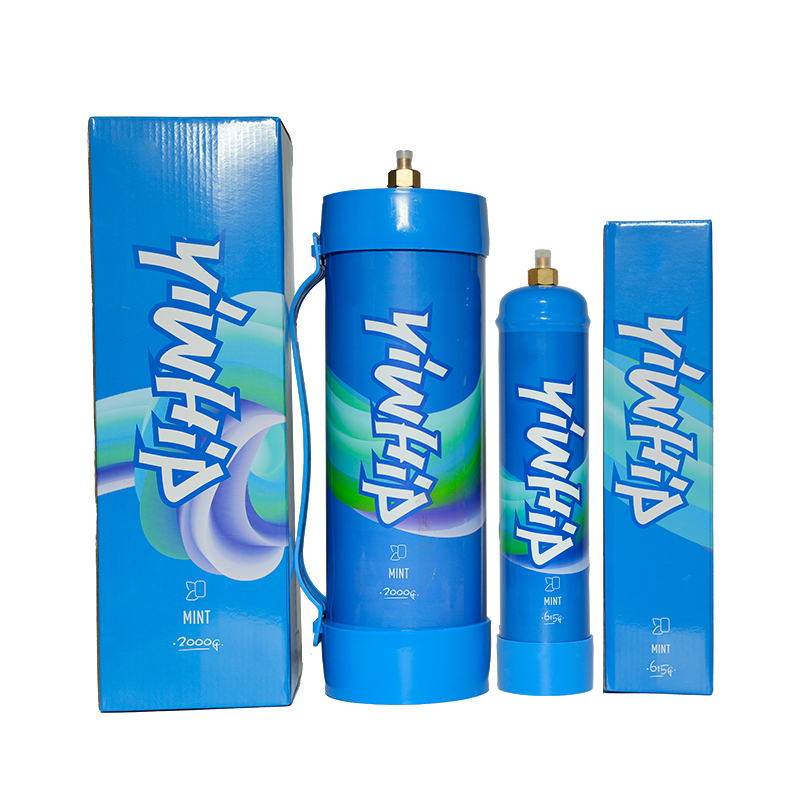What Are Whipped Cream Chargers and Why They Matter in 2024?
In 2024, whipped cream chargers have become an essential part of both commercial and home kitchens alike. **A whipped cream charger is a small, pressurized cartridge usually filled with nitrous oxide (N₂O)** gas that’s used to dispense or whip creamy substances like cream, foams, and even cocktails. These little cylinders power whipping cream dispensers, commonly referred to as cream whippers, which enable chefs and everyday cooks to whip air into cream and similar mixtures instantly—producing light, fluffy textures that were once hard to achieve without elbow grease.
Beyond basic culinary applications, the role of whipped cream dispensers and their N₂O cartridges has grown substantially. Now found not only behind restaurant lines and coffee bars but also increasingly common inside stylish at-home espresso stations and kitchen drawers across America, these tools make dessert topping a one-handed job — quick and mess-free. Whether it’s fluffing milk foam onto a cappuccino or preparing vegan-friendly alternatives, quality whipping systems powered by reliable chargers ensure professional-level output each time. Let's take an informed dive into how to get the best performance for different whipping needs!
The Different Types of Whipped Cream Chargers: Exploring Options Available Today
As we move further into 2024, several key options dominate when it comes to choosing quality **whipped cream chargers**, each suited to specific user preferences, usage rates, and sustainability goals:
- Steel Cartridges: This standard remains popular for both personal and professional users thanks to its sturdy design and fast delivery response when whipping cream.
- N₂O Tanks with Dispensing Attachments (Reusables): These larger-scale setups are more often found in high-use cafes and pastry kitchens where efficiency plays critical roles and waste management matters.
- Branded Disposable Chargers: Brands such as MosaWhip, BestWhip, and others produce disposable N₂O cells tailored precisely to certain dispensers, offering consistent results every round.
- Eco-Friendly and Recycled Chargers: As consumers grow aware of environmental impact, newer reusable or partially eco-responsible designs are making strides in mainstream accessibility without losing quality output or usability advantages.
Each option serves its distinct need—whether you're topping ten espressos daily, prepping mousse batches for desserts on Sunday nights, or running a gourmet food stall aiming at minimizing carbon footprints via reusable systems—the variety now available ensures demand-driven solutions without sacrificing consistency or convenience.
Choosing Based on Usage Frequency & Quantity Needs
The next step after identifying types is figuring out what level suits YOUR current usage rate. Here's a breakdown based on use:
- Casual Home Cooks:If your primary usage includes whipping occasional frostings, adding fresh mochas or weekend brunch beverages—you can opt for smaller-sized, pre-packed boxes that house 6 to 10 disposable chargers, which work fine unless you frequently prepare multiple recipes in one sitting.
- Frequent Kitchen Users (Twice-weekly or Daily Use Cases)Those who enjoy cooking regularly or own modest baking stations would find investing in bulk-buy refill kits far smarter. Look into combo packs featuring extra cartridges and spare tips for added convenience long-term—these are priced more fairly versus frequent smaller purchases while saving shipping overheads.
- Restaurant & Café-Level Users: Bulk Buying Makes All the DifferenceFor professionals managing dozens of servings per shift or catering orders daily, upgrading to tank-style models or wholesale pricing through suppliers is advised. Some large restaurants also choose to purchase commercial-size tanks from brands like Precisionwhip, enabling direct connection refills to built-in dispenser lines. This minimizes handling time and significantly lowers per-serving costs compared to individually swapping cartridges all morning.

(Illustrated distribution chart showing typical quantities consumed per use group in early-2024 trends)
When assessing this scale and selecting wisely accordingly, **users gain control**—both financial and practical over operations. You’ll be amazed by improved consistency plus minimized disruptions when working efficiently under deadlines during meal rush hours or party prep.
Determining Quality: Key Factors That Should Guide Your Selection
No two chargers are created equally—several factors influence longevity, effectiveness, flavor neutrality, and overall safety in operation. Below are four non-compromise indicators for high-caliber charger quality:
- Purity of Nitrous Oxide Inside The Cell:Better-quality chargers use food-grade (USP-certified) NOG (Nitrogen Oxygen Gas combination) sealed safely in leakproof vessels. Cheaper imitations might compromise purity leading eventually to odd odors or altered textures post-whippng.
- Risk of Clogging Or Residue Deposits Post-use:If the charger leaves microscopic particles in internal channels or fails due to uneven gas distribution causing incomplete churning – avoid! Premium models tend toward smoother release, minimal deposits hence less cleaning/maintenance over time.
- Built-In Safety Mechanisms (for Professional Kits or Reusable Tanks). Especially true regarding industrial tanks—ensuring features like burst valves, overheat-resistant materials prevent unexpected pressure surges which may result in equipment hazards or injuries—vital in packed kitchen settings.
- Sourced From Trustworthy Distributorship Platforms / Authentic Supplier Ranks High:Stick within certified reseller lists listed officially via product brand portals. Avoid random market sellers lacking lab test results certifications.

